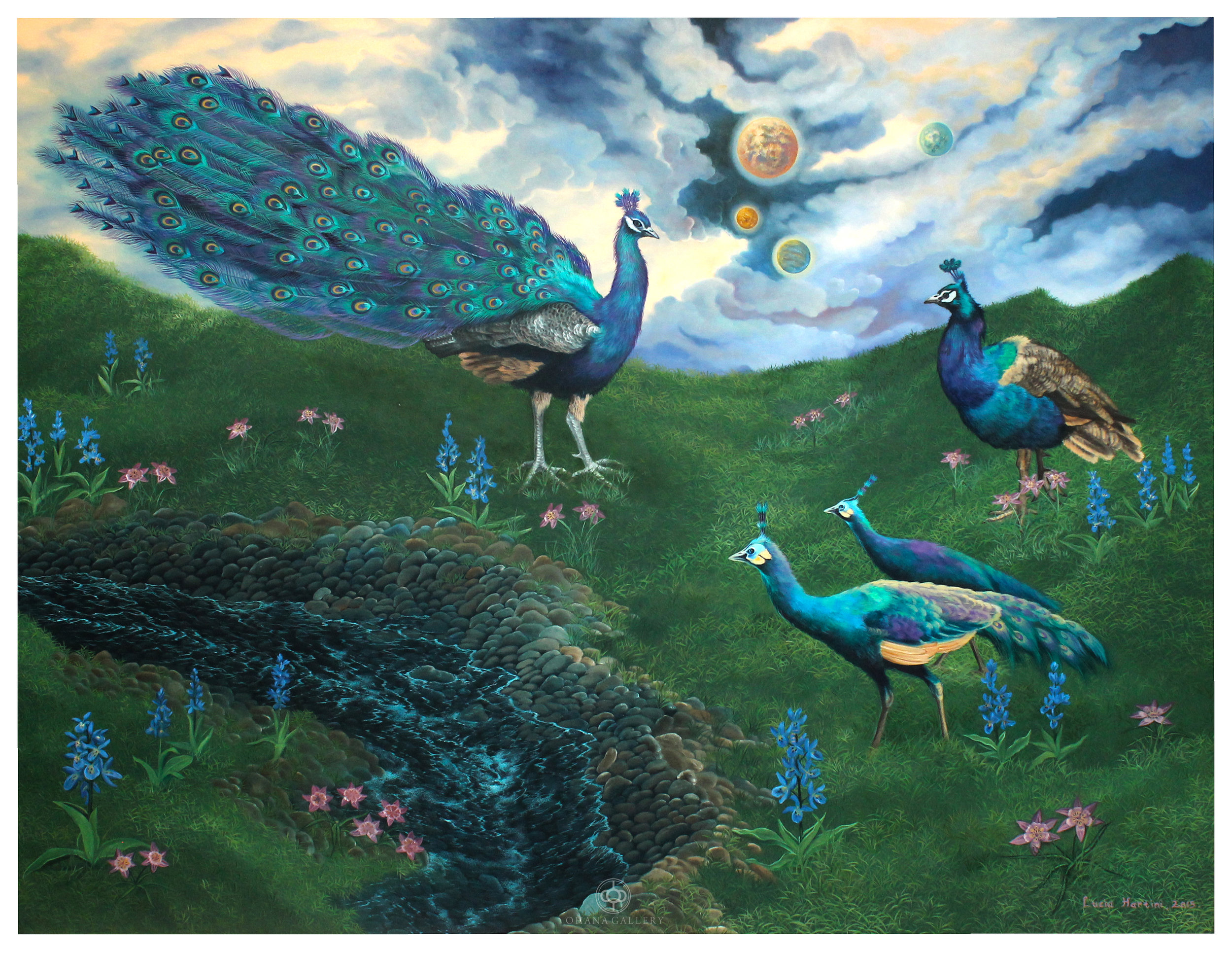Lucia Hartini
"It tells me about my obsession with my eyes, human eyes, eyes that frighten me so much, they follow me wherever I go and they always want to know my relationship."
Lucia Hartini is a surrealist Indonesian female painter, born in Temanggung, Java in 1959 who went to the Indonesian Fine Arts School (SSRI) Yogyakarta. Lucia’s artistic style is heavily influenced by Surrealism, whereby the paintings often include some nature phenomenon combined with detailed realism techniques.
Often inspired by her own encounters with the underworld through her meditation practices, Lucia’s painting intend to merge the dualism of the realistic world through her painstaking detailed oil painting technique with hatching-like technique in which she covered her entire painting, as if to visually emphasize the merge of concept of volume, light, space and light.
The object of Lucia’s painting often includes the motion of water and fantasy-like objects (one of cloud, planets and systems) as to convey the other worldly subject in which she peruses most of her time with. She was inspired by her spiritual repertoire, which Lucia claimed she experienced through her communication with nature and God. Therefore, there is always an element of water and clouds in her paintings to convey that there are no boundaries between her, nature and the Creator.
=
Lucia’s work is much sought by painting collectors, and Lucia’s paintings are often included in national and international exhibitions. In fact, one of her paintings entitled “The Blue Moon” is collected by the Tokyo Fukuoka Museum Japan, and used as the cover of an English-language book, “Modern Asian Art”. All the awards and success Lucia has achieved made her proud of herself, as it was her own struggle as a single parent to raise her four children all on her own.
Lucia realized as well her struggles in the Patriarchal society and Indonesia and her place in the society. While many female artists gave up their artistic career, Lucia continued producing artworks many of which reflected her struggle with societal expectation of her role as a female, which reflected her Feminist movement









